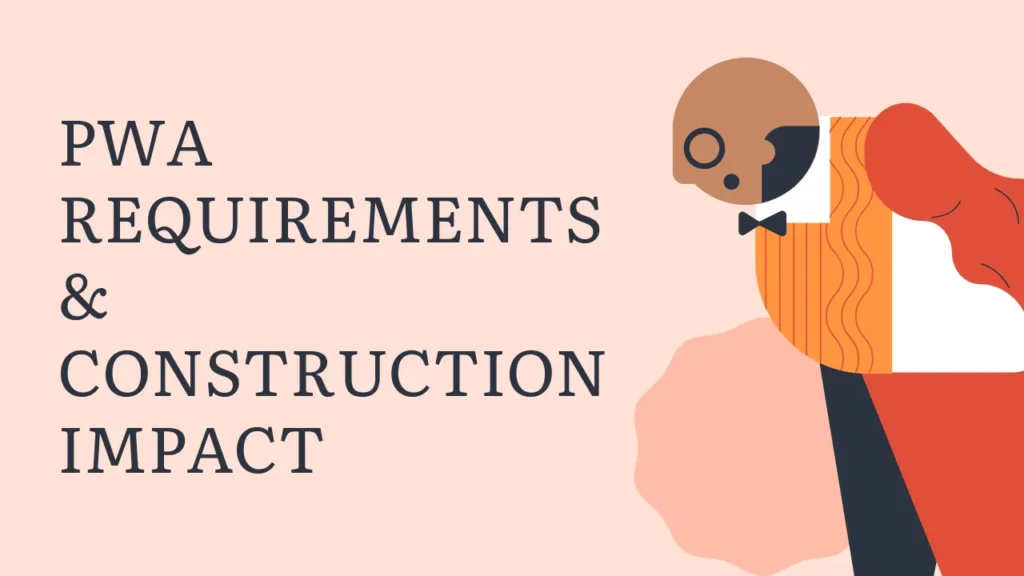As construction projects in clean energy are growing fast, the U.S. Department of the Treasury and the IRS created new rules. These rules make sure workers are treated fairly.
Prevailing Wage and Apprenticeship (PWA) requirements make sure workers get fair pay and proper training. They also help taxpayers and project managers by keeping projects on track. This guide explains PWA requirements and how they affect contractors, project owners, and taxpayers.

What is Prevailing Wage and Apprenticeship (PWA)?
PWA requirements are rules that protect construction workers. They ensure workers earn fair wages and receive proper training. These rules can affect:
- Project costs
- Timelines
- How labor is managed
Contractors and project managers must follow PWA rules. This helps avoid fines as well as legal issues. Following PWA standards can also increase eligibility for clean energy tax credits under the Inflation Reduction Act. In some cases, this can be up to five times the base amount.
The U.S. Treasury issued final PWA rules on June 25, 2024. Some smaller projects under 1 MW or projects started before January 29, 2023 may not need to follow these rules.
What is the Prevailing Wage Requirement?
The Prevailing Wage Requirement makes sure all laborers and mechanics get at least the standard wage for their work. This includes the hourly rate plus other benefits.
The U.S. Department of Labor (DOL) sets these wage rates. They publish them on sam.gov. Following this rule is important to qualify for higher tax credits or deductions under the Inflation Reduction Act.
What is the Apprenticeship Requirement?
The apprenticeship requirement ensures contractors or taxpayers hire registered apprentices during construction. It also helps train the workforce and follow PWA rules.
To meet the standards, three key conditions must be met: labor hours, ratios, and participation.
1. Apprenticeship Labor Hour Requirements
Contractors must make sure apprentices work a certain percentage of total labor hours:
- 12.5% for projects started in 2023.
- 15% for projects started in 2024 or later.
2. Apprenticeship Ratio Requirements
The ratio of apprentices to journeyworkers must follow rules from one of these agencies:
- DOL’s Office of Apprenticeship.
- State apprenticeship agency.
3. Apprenticeship Participation Requirements
If a project has four or more employees, there must be at least one registered apprentice on the team.
Qualified Apprentices and Applicability
Only apprentices enrolled in a Registered Apprenticeship Program recognized by the U.S. DOL or a state apprenticeship agency are considered to meet the requirements. These apprenticeship provisions apply only during the construction phase of a facility. Once the project is completed and placed in service, the requirements no longer apply.
Impact of PWA Requirements on Construction Projects
PWA requirements have a significant impact on construction projects, especially in the clean energy sector. Here are the insights into the same:
| Impact | What It Means | Key Benefits | Extra Notes |
| Higher Project Costs | Paying prevailing wages and hiring registered apprentices increases upfront expenses | Better workmanship, higher productivity, improved safety | Reduces long-term repair or rework costs |
| Project Timelines | Tracking labor hours, apprenticeship participation, and documentation keeps schedule on track | Prevents delays | Helps project managers plan efficiently |
| Legal Risks | Following PWA rules avoids fines and disputes | Reduces chances of work stoppages | Ensures compliance with regulations |
| Tax Benefits | Meeting PWA standards qualifies projects for tax incentives | Up to 5× base clean energy tax credits under IRA | Encourages adherence to PWA rules |
| Skilled Workforce | Hiring apprentices under structured programs | Builds competent, capable, and efficient teams | Prepares workforce for future projects |
| Quality & Safety | Fair wages and trained laborers | Higher-quality construction, safer work environment | Fewer accidents and labor-related delays |
Best Practices for PWA Compliance
The compliance with PWA requirements for contractors and project owners can be achieved by following the mentioned measures:
Review Applicable Wage Determinations
Before starting a project, contractors and project owners should consult the U.S. Department of Labor’s wage determinations on sam.gov. This ensures that all labor classifications and prevailing wage rates are clearly understood. Thus, it eliminates the scope of underpayment or misclassification of workers.
Engage Registered Apprentices Early
Partnering with U.S. DOL or state-approved apprenticeship programs during the planning stage ensures that qualified apprentices perform the required percentage of labor hours. Early engagement allows sufficient time to schedule apprentices. It also allows easily handling the unforeseen circumstances.
Maintain Accurate Payroll and Documentation
Contractors must track all labor hours, including those performed by apprentices. They must keep detailed payroll records. Incorporating digital payroll systems and certified reporting platforms simplifies compliance verification. It also prepares the project for potential audits.
Coordinate Between Taxpayers, Owners, and Contractors
Clear communication is a must. It helps make sure that everyone understands their responsibilities under PWA rules. Taxpayers, owners, and contractors should align on the following to avoid compliance gaps:
- Documentation
- Wage verification
- Apprenticeship participation
Train Project Teams on Compliance Procedures
Providing training helps make sure that staff understands recordkeeping and wage calculations. They will also be clear on reporting obligations. Well-informed teams can prevent errors that could result in penalties or loss of tax credits. It is a must to considering training teams of:
- HR
- Accounting
- Project management
Plan and Monitor Throughout the Project
Compliance needs to go on. Continuous monitoring is needed for:
- Labor hours
- Apprentice participation
- Payroll
It helps make sure that PWA standards are maintained for the project’s duration. Further, early identification of issues allows timely corrections. It helps with protecting tax credit eligibility and project integrity.
Conclusion
Meeting PWA standards might feel like extra work, but it pays off. It ensures smooth running and safety of the projects run, appropriate training and wages for the workers, and allows for securing larger tax incentives for contractors. Planning further helps keep clear records and partner with registered apprenticeship programs. It also avoids stress for construction teams, strengthens their workforce, and delivers better-quality projects, while supporting a growing, sustainable clean energy sector.






